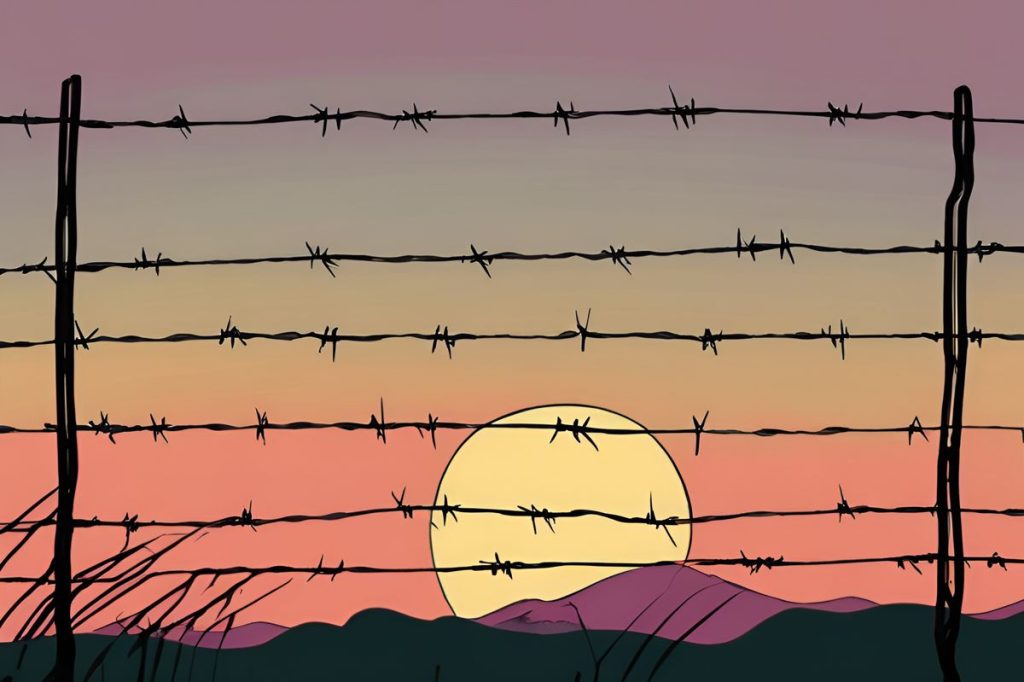In Cyprus, the controversial barbed wire installed in the buffer zone near Akaki, Peristerona, and Astromeritis remains intact despite government promises for its removal, leading to widespread local discontent and protests. Criticized for its ineffectiveness in controlling migrant flows, the wire has also disrupted agricultural activities and raised significant political concerns, with community leaders urging for urgent action to restore freedom of movement and normalcy.
Why has the Cyprus government not removed the barbed wire from the buffer zone?
Despite promises, the Cyprus government has not removed the barbed wire in the buffer zone due to operational challenges faced by peacekeepers and political implications. The barbed wire’s presence, criticized for its ineffectiveness in curbing migrant flows, has caused social and agricultural difficulties for local residents, leading to protests and discontent.
Unfulfilled Promises for Removal
Despite the Cyprus government’s assurances of removing the contentious barbed wire in the buffer zone near Akaki, Peristerona, and Astromeritis, the wire remains intact. This installation, aimed at curbing migrant flows, has drawn criticism and concerns from various quarters, including the United Nations Peacekeeping Force in Cyprus (Unficyp). The spokesman, Aleem Siddique, highlighted a lack of change on the ground and referred to the UN Secretary-General Antonio Guterres’ reports which alluded to the operational challenges faced by peacekeepers, especially in terms of their restricted movement.
The concern goes beyond operational hindrance. There’s also a symbolic defiance. The barbed wire had been installed despite objections from the UN mission, which perceived it as a disregard for their peacekeeping efforts. This raises questions about the effectiveness of such barriers and their impact on the relationships between local authorities, international organizations, and the affected communities.
Operational Ineffectiveness and Political Ramifications
The barbed wire’s presence has been questioned in terms of operational effectiveness. A police report, which concluded that the wire had no significant impact on migrant flows, seemed to reinforce the government’s decision to remove it. Justice Minister Marios Hartsiotis echoed the sentiment, speaking of enhanced police patrols and surveillance measures as replacements for the physical barrier.
The political implications are substantial as well. Statements from officials, including House President Annita Demetriou, criticized the barbed wire’s utility, pointing out not just its ineffectiveness but also the political cost to Cyprus. The government had signaled its intent to remove the wire, considering the observed migrant flows over the summer that indicated the barrier’s failure in serving its intended purpose.
Local Reaction and Social Consequences
The repercussions of the barbed wire extend to the local populace. Villagers have experienced difficulties in agricultural activities, property value depreciation, and restrictions on new construction due to the wire’s installation. The palpable frustration culminated in a protest by around 200 affected residents, indicative of the social strain induced by the barrier.
The discontent is not limited to the inconvenience caused. There is a profound sense of being cut off, as voiced by community leaders, who vehemently opposed the extension of the wire into their areas. They warned against the dire consequences of further isolation and the loss of free movement, reflecting the broader humanitarian and social issues at stake.
Historical Context and Future Outlook
The barbed wire, installed in the spring of 2022 and colloquially dubbed the “Nouris wire,” was a response to the increase in asylum claims by individuals crossing from Turkey to the Republic of Cyprus. While initial plans were ambitious in scope, local opposition played a crucial role in preventing their full realization.
The future of the barbed wire and the government’s handling of the issue remain uncertain. With promises made and yet to be fulfilled, the affected communities continue to await decisive action that would alleviate their concerns and restore normalcy to the buffer zone.
Why has the Cyprus government not removed the barbed wire from the buffer zone?
Despite previous assurances, the Cyprus government has not removed the barbed wire in the buffer zone due to ongoing operational challenges faced by peacekeepers and the associated political implications. The wire, criticized for its ineffectiveness in controlling migrant flows, has caused significant social and agricultural difficulties for local residents, contributing to widespread protests and community discontent.
What are the criticisms regarding the effectiveness of the barbed wire?
The barbed wire has been deemed operationally ineffective in curbing migrant flows, as highlighted by a police report concluding that it had no significant impact. Justice Minister Marios Hartsiotis suggested that enhanced police patrols and surveillance measures could serve as more effective alternatives to the physical barrier. This has led to questions about the wire’s utility and the political ramifications it poses for Cyprus.
How has the local community reacted to the presence of the barbed wire?
The barbed wire has incited considerable frustration among local residents, affecting their agricultural activities, property values, and opportunities for new construction. This discontent manifested in protests with around 200 residents demonstrating against the wire’s presence, emphasizing the social strain it has placed upon the community and their concerns about losing free movement and further isolation.
What historical context led to the installation of the barbed wire?
Installed in the spring of 2022, the barbed wire—often referred to as the “Nouris wire”—was a response to a surge in asylum claims from individuals crossing from Turkey to the Republic of Cyprus. Although the initial plans for the wire were ambitious, local opposition played a significant role in curtailing their execution. The future of the barbed wire and the government’s commitment to addressing the concerns of affected communities remain uncertain as residents continue to await meaningful action.

